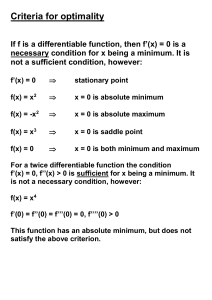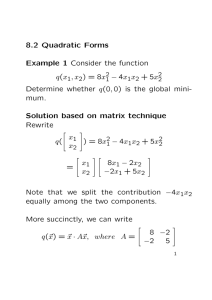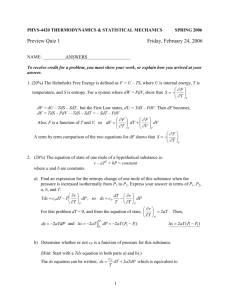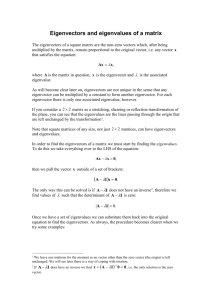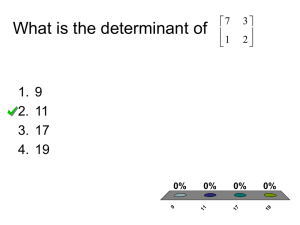7.16. Eigenvalues Of A Symmetric Transformation Obtained As
advertisement
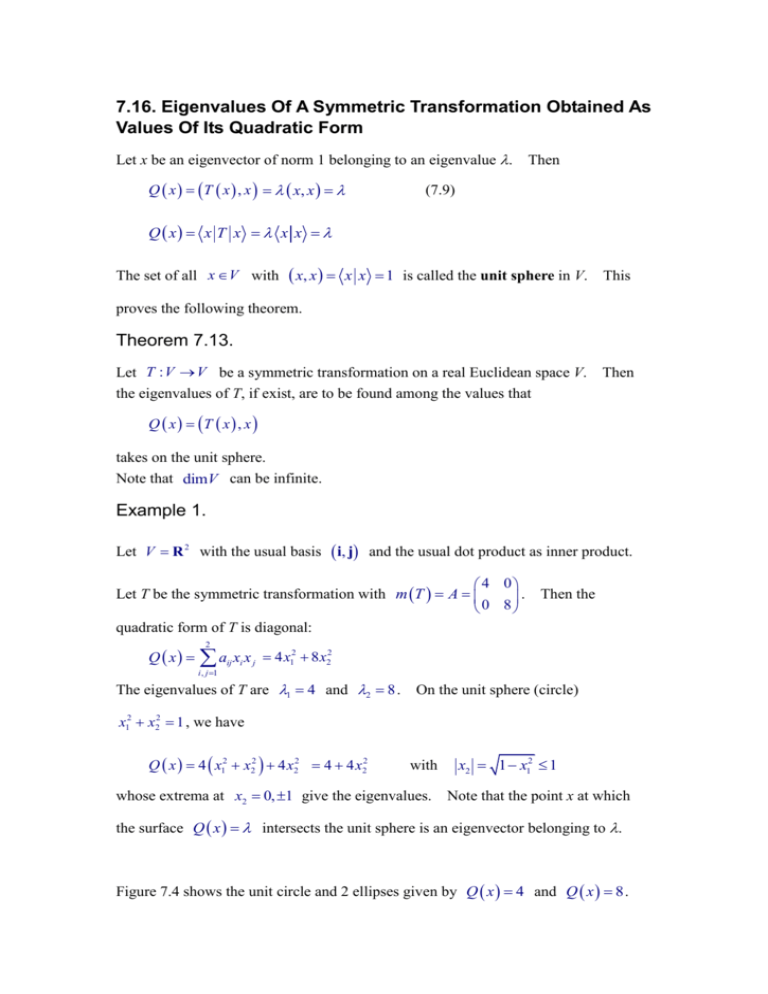
7.16. Eigenvalues Of A Symmetric Transformation Obtained As Values Of Its Quadratic Form Let x be an eigenvector of norm 1 belonging to an eigenvalue . Then Q x T x , x x, x (7.9) Q x x T x x x The set of all x V with x, x x x 1 is called the unit sphere in V. This proves the following theorem. Theorem 7.13. Let T : V V be a symmetric transformation on a real Euclidean space V. Then the eigenvalues of T, if exist, are to be found among the values that Q x T x , x takes on the unit sphere. Note that dimV can be infinite. Example 1. Let V R 2 with the usual basis i, j and the usual dot product as inner product. 4 0 Let T be the symmetric transformation with m T A . Then the 0 8 quadratic form of T is diagonal: Q x 2 a x x i , j 1 ij i j 4 x12 8 x22 The eigenvalues of T are 1 4 and 2 8 . On the unit sphere (circle) x12 x22 1 , we have Q x 4 x12 x22 4 x22 4 4x22 with whose extrema at x2 0, 1 give the eigenvalues. x2 1 x12 1 Note that the point x at which the surface Q x intersects the unit sphere is an eigenvector belonging to . Figure 7.4 shows the unit circle and 2 ellipses given by Q x 4 and Q x 8 . The inner ellipse Q x 4 intersects the unit circle at x 1,0 . Hence, u1 t 1,0 is an eigenvector belonging to 1 4 . Similarly, the outer one Q x 8 intersects the unit circle at x 0, 1 . Hence, u2 t 0,1 is an eigenvector belonging to 2 8 . Theorem 7.14. Let T : V V be a symmetric transformation on a real Euclidean space V with a quadratic form Q x T x , x . Assuming that Q does not change sign on V. Then Q x 0 implies T x O . In other words, if Q does not change sign on V, then Q vanishes only on the null space N T . Proof Let t R and y V . With Q x 0 , we have Q x ty T x ty , x ty T x tT y , x ty T x , x t T x , y t T y , x t 2 T y , y 2at bt 2 where a T x , y y , T x and b Q y If Q is nonnegative on V, then b 0 and 2at bt 2 0 t R Consider then the quadratic polynomial p t 2at bt 2 . The condition p t 0 then requires it to lie entirely in the upper t-p plane. However, p t is a parabola. Hence, it can intersect with the t-axis at no more than one point, otherwise, part of it will be in the lower t-p plane. Now, the roots of 2at bt 2 0 are t 0 or t the root t 2a . b Since Q x 0 , the root t 0 is a necessity. Therefore, 2a must coincide with t 0 . b T x , y O Thus, we must have a 0 , i.e., y V Hence, T x O as desired. Proof for the case Q non-positive on V is similar.

